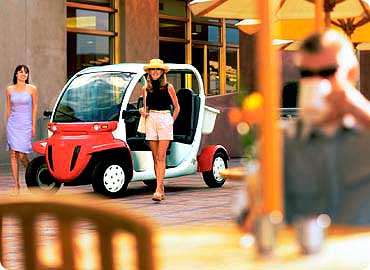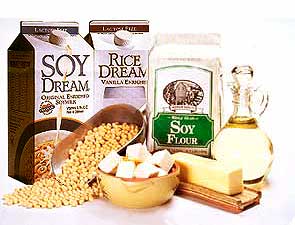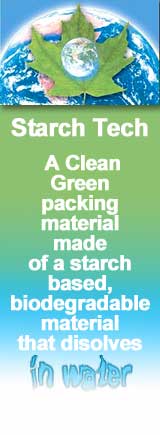Greener Tips Newsletter
September 30, 2005
Don't play golf! Well never mind, this won't be allowed on the back nine anyway, Gem or Global Electric Motorcar is the new zero emission urban vehicle from Dialmer Chrysler. It's garnering and greening lots of attention around our town and probably yours.

Battery operated and rechargeable this little gem is capable of 35 mph and is fully functional or 'street certified' in most of the country. You need a license to operate it and it too must have a standard vehicle license and insurance. The Gem is available in a half dozen colors and several styles including the 2 seater (shown), a 4 seat model and a few commercial versions with hauling capability. The Gem meets the latest standards of the National Highway Safety Transportation Administration including safety windshield glass, wipers, headlights, tail lights, turn signals, stop lights, mirrors and safety belts. Best of all it will travel up to 30 miles on one charge of its 6 pack of 12 volt batteries.
The Gem is available at dealers across the country - you can find them here - and starts at around $7,000-$8,000 for the 2 seater. If you can park one of these in your garage along side the family car, trips to the grocer, dropping the kids at school or just taking an evening drive in the sunset will save fuel, clean the air and keep your teeth bug free.
_________________________________________
 A naturally Green Home is easy when you know a few simple secrets that make your home environment healthy as well as clean. Hundreds of common as well as exotic chemical agents in today’s home form an invisible cloud that envelops our homes, a cloud that can be relatively benign or, worst case, severely toxic.
A naturally Green Home is easy when you know a few simple secrets that make your home environment healthy as well as clean. Hundreds of common as well as exotic chemical agents in today’s home form an invisible cloud that envelops our homes, a cloud that can be relatively benign or, worst case, severely toxic.There are three types of chemical sources that we typically encounter in the home. Biotics are chemical compounds that are formed naturally by plants and animals in the slow burn called metabolism. Plants metabolize soil, sunlight and water for instance, creating compounds that they need to survive in the process producing waste oxygen, that nourishes us. Biotics provide most of our nutritional requirements and to a far lesser extent some of the materials that make up our homes, predominately wood and natural fibers.
The second group of chemical compounds in our environment is the inorganics or common chemicals that are not the result of biologic activity. These include compounds like salt, water, rock and metals. Generally stable compounds this group of inorganics constitute the tools in our homes, the building materials and trace nutritional elements like salt, iron and potassium.
The third chemical compound family that we live with are synthetics, those materials not normally found in nature and for the most part, to one degree or another, the most unstable and therefore most highly toxic of the three groups. These include gases, liquids and solids formed synthetically either by combining various components, a process called synthesis or subtracting elements by distillation. Examples in our homes may be as common as the petroleum distillate that we use to clean or as exotic as the fluorine gas in a fluorescent light bulb. These are the chemical compounds that we keep away from children and pets and for good reason.
Where as these synthetics may have the potential to make our lives easier and more comfortable or efficient they can in turn be lethal, sometimes in surprisingly small doses. Synthetic compounds also inflict enormous havoc in the environment, damage that is not only immediate but cumulative andoccasionallyy extremely long lasting.
According to the U.S. Consumer Product Safety Commission, more than 150 chemicals that we use every day in the average home are linked to severe, chronic health problems.
A few simple things you can do to minimize the toxic impact of nonorganicsc chemicals on your family, your home and the environment:
- Check labels - when you shop look for cleaners that contain natural ingredients, you'll know them when you read them: water, carbonate of soda, citrus andalcoholl and natural enzymes are the basic ingredients in natural cleaners. Chloro compounds, hydroxyls and surfactants are non biodegradable and usually found in more toxic cleaners.
- Look for labels that display the organic symbol.
 The FDA recently set in place a comprehensive guildline for organic standards. It is well worth the time to read and understand.
The FDA recently set in place a comprehensive guildline for organic standards. It is well worth the time to read and understand. - Recycle - Use your own shopping bags, cotton canvas or hemp that are reusable. Recycle plastic, metals, glass and paper.
- Buy small - purchase building materials and supplies with a limited shelf life like: paint, insulation (can break down with exposure to humidity and sunlight during prolonged storage), caulk, glue and organic fertilizers in quantities justsufficientt to do the job at hand and not more. This reduces waste saves $$, empties you garage and reducespollutionn in landfills. If you cannot find small packages of, say insulation, consider donating the left overs to charity. Don't throw it away.
- Smell - Substitute natural air fresheners like cedar chips, fresh flowers, vanilla, cinnamon and citrus (3-4 drops of real lemon to a cup of water in a spritzer) to replace synthetic perfumed air fresheners. Turn of air conditioners and open windows periodically to refresh the inside air. Avoid burning candles in a closed environment or use soy based candles which produce no soot (air born ash and oils) which can cause congestion and eye irritation.
_____________________________________
Soy Protein Helps Prevent Broken Bones
By Jodey Byers, Staff writer Greener Magazine
 There has been some debate recently about the benefits of soy. Some believe that soy is neutral; that its health benefits have been exaggerated. Others say that soy is very good; helping ease the symptoms of menopause and lower LDL (bad) cholesterol in both women and men and providing a good source of protein for those of us who do not eat meat. There is still a third group that thinks soy is bad; that soy contains dangerous chemicals and should only be used sparingly.
There has been some debate recently about the benefits of soy. Some believe that soy is neutral; that its health benefits have been exaggerated. Others say that soy is very good; helping ease the symptoms of menopause and lower LDL (bad) cholesterol in both women and men and providing a good source of protein for those of us who do not eat meat. There is still a third group that thinks soy is bad; that soy contains dangerous chemicals and should only be used sparingly.Although soy may not be the panacea that some gurus thought it was, the truth is that soy is probably better for you than a piece of chicken or a hamburger. It has fewer calories and less fat per serving. Studies have shown that soy, as a part of a varied and healthy diet, can lower LDL cholesterol. And while claims that soy helps ease symptoms of menopause may be dubious, new research reviewed in the Journal of the American Medical Association this month has shown that post-menopausal women who eat soy lower their risk of broken bones due to osteoporosis by 37%. According to the research, the decrease was especially pronounced in the first few years following menopause, which correlates to a time of accelerated bone loss in post-menopausal women who do not eat soy.
According to the study, which was performed at Vanderbilt University and the Shanghai Cancer Institute, as the amount of soy in diet increased, the risk of bone fractures decreased. The amount of soy protein associated with the decreased risk of broken bones is about 13 grams per day. Adding soy to your diet can be easy. Replacing a yogurt smoothie with a tofu or soy smoothie will give you about seven grams of soy protein. Just 3 ounces of soft tofu is only 52 calories and has 5.5 grams of soy protein. One ounce of soy nuts contains 130 calories and a whopping 10 grams of soy protein.
For more information on soy, you can look at studies published in the Journal of the American Medical Association, key word soy or you can go to the National Institutes of Health. (key word soy). To learn more about easy and healthful ways to add soy to your diet, go to SoyBean.org and download the Soyfoods guide. The research on soy and menopause originally appeared in the September, 2005 issue of the Archives of Internal Medicine. An abstract of the study can be found here*.
Note: There is no link to the full article, but the link above leads to the abstract.
The full citation* of the article is:
“ Prospective Cohort Study of Soy Food Consumption and Risk of Bone Fracture Among Post-Menopausal Women.” Archives of Internal Medicine (165:16) September, 2005 pgs 1890-1895, by Zhang, Xianglan; Shu, Xiao-Ou; Li, Honglan; Yang, Gong; Li, Qi; Gao, Yu-Tang; and Zheng, Wei.

 Please recycle this Newsletter to a friend
Please recycle this Newsletter to a friend

